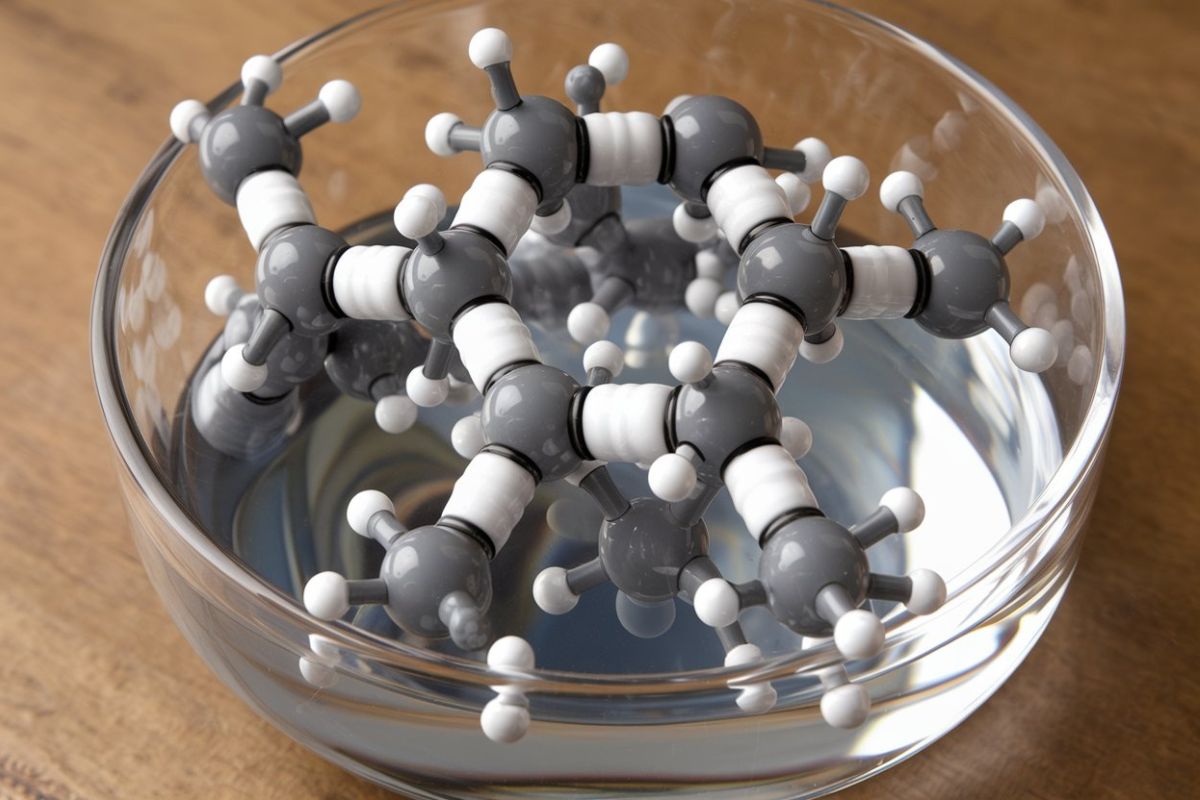
What is n-Tetracosane? n-Tetracosane is a hydrocarbon with the chemical formula C24H50. It belongs to the alkane family, which means it consists solely of hydrogen and carbon atoms arranged in a straight chain. This compound is solid at room temperature and has a waxy texture. n-Tetracosane is often found in paraffin wax, which is used in candles, coatings, and even some cosmetics. Its melting point is around 51°C (124°F), making it useful in various industrial applications. Understanding the properties and uses of n-Tetracosane can help you appreciate its role in everyday products. Let's dive into 15 intriguing facts about this fascinating compound!
What is n-Tetracosane?
n-Tetracosane is a fascinating hydrocarbon. It's part of the alkane family, which means it consists entirely of hydrogen and carbon atoms. Let's dive into some intriguing facts about this compound.
-
Chemical Formula: n-Tetracosane has the chemical formula C24H50. This means it has 24 carbon atoms and 50 hydrogen atoms.
-
Structure: Its structure is linear, making it a straight-chain alkane. This gives it unique physical properties compared to branched alkanes.
-
Molecular Weight: The molecular weight of n-Tetracosane is approximately 338.66 g/mol. This makes it a relatively heavy molecule in the alkane series.
Physical Properties of n-Tetracosane
Understanding the physical properties of n-Tetracosane can help in various applications, from industrial uses to academic research.
-
Melting Point: It melts at around 50-52°C. This relatively low melting point is typical for long-chain alkanes.
-
Boiling Point: The boiling point is quite high, approximately 391°C. This makes it stable under many conditions.
-
Density: n-Tetracosane has a density of about 0.778 g/cm³ at 20°C. This is lower than water, meaning it will float if placed in water.
Uses of n-Tetracosane
n-Tetracosane has several practical applications, making it valuable in different industries.
-
Lubricants: It's often used in lubricants due to its stable and non-reactive nature.
-
Phase Change Materials: n-Tetracosane is used in phase change materials (PCMs) for thermal energy storage. It can absorb and release heat efficiently.
-
Cosmetics: Some cosmetic products use n-Tetracosane as an ingredient to improve texture and stability.
Natural Occurrence and Synthesis
n-Tetracosane can be found in nature and synthesized in labs. Both methods have their significance.
-
Natural Sources: It occurs naturally in some plants and insects. For example, it can be found in the waxes of certain leaves.
-
Synthesis: Chemists can synthesize n-Tetracosane through various methods, including the Fischer-Tropsch process, which converts carbon monoxide and hydrogen into hydrocarbons.
Environmental Impact and Safety
Understanding the environmental impact and safety of n-Tetracosane is crucial for its responsible use.
-
Biodegradability: n-Tetracosane is biodegradable, meaning it can be broken down by microorganisms in the environment.
-
Toxicity: It is considered non-toxic, making it safe for use in various applications, including cosmetics.
-
Environmental Impact: While n-Tetracosane itself is not harmful, its production and disposal should be managed to minimize environmental impact.
Fun Facts about n-Tetracosane
Let's end with some fun and lesser-known facts about this intriguing compound.
- Crystalline Form: At room temperature, n-Tetracosane can form beautiful, waxy crystals. This makes it interesting for educational demonstrations and scientific studies.
Final Thoughts on n-Tetracosane
n-Tetracosane, a hydrocarbon with 24 carbon atoms, plays a crucial role in various industries. Found in paraffin wax, it’s used in candles, coatings, and even as a lubricant. Its high melting point makes it ideal for thermal energy storage. This compound also appears in nature, found in beeswax and plant cuticles, aiding in water retention and protection. Despite its industrial and natural significance, n-Tetracosane remains relatively unknown to many. Understanding its properties and applications can shed light on its importance in everyday products and natural processes. From enhancing the longevity of materials to contributing to the survival of plants and insects, n-Tetracosane proves to be a versatile and valuable compound. Next time you light a candle or admire a plant’s glossy leaves, remember the role this fascinating hydrocarbon plays.
Was this page helpful?
Our commitment to delivering trustworthy and engaging content is at the heart of what we do. Each fact on our site is contributed by real users like you, bringing a wealth of diverse insights and information. To ensure the highest standards of accuracy and reliability, our dedicated editors meticulously review each submission. This process guarantees that the facts we share are not only fascinating but also credible. Trust in our commitment to quality and authenticity as you explore and learn with us.


